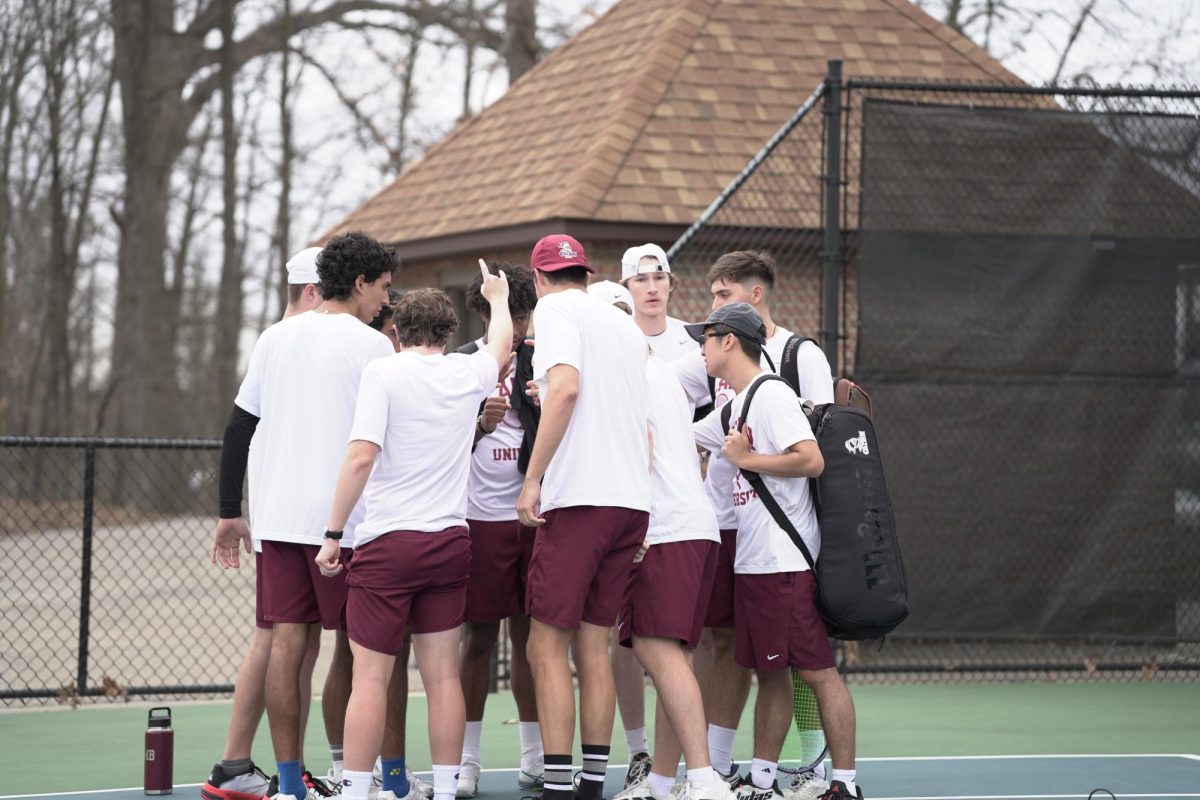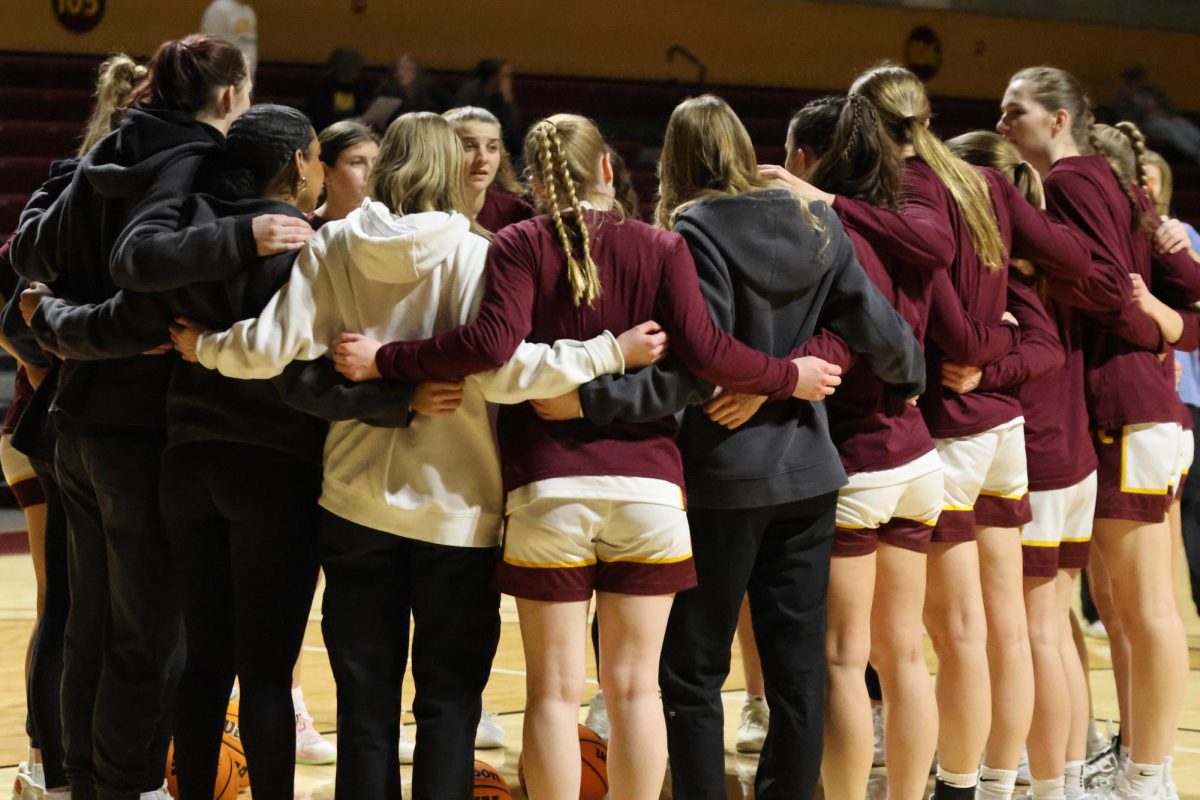As Calvin starts its first-ever football season, we understand that not everyone on campus is familiar with American football, its rules or its scoring system. To give Calvin students a better understanding of the game, Chimes sports reporter Dillion Baumchen wrote this breakdown of the rules and penalties of collegiate football; there are some slight differences between professional and collegiate rules.
Basics
The game begins with a kickoff, where one team kicks the ball towards the players on the other team. Kickoffs are done to begin each half as well as after a team scores a touchdown or field goal. If the ball hits in the endzone during a kickoff, it’s considered a touchback. This means the ball is placed on the 25 yard line. After the kickoff, each play begins at the line of scrimmage where players on offense must start either at or behind and players on defense must start on the other side of the yard line.
A play begins when the center snaps the ball to the quarterback.
First Downs
A team has four chances, called downs, to gain 10 yards. However, most teams either punt or kick the ball on fourth down instead of trying to gain yards. This is because if the team fails to gain 10 yards after four plays they give the other team the ball where they were stopped. If the offense gains 10 or more yards, the process is repeated.
Passing rules
When passing the ball there are specific rules to when and how you pass the ball. You must be behind the line of scrimmage to pass the ball forward, but you can always throw the ball behind you. You are only allowed one forward pass each play, so a player cannot catch the ball and then throw it forward again.
In order for a pass to be ruled a catch, a player must have one foot in bounds while having possession of the football.
Positions
Offense: The players trying to score the ball
Quarterback (QB): The most important position on the field. These players throw the football.
Running Back (RB): These players line up either beside the quarterback or behind him; their main job is to run the football. They also block for the quarterback and catch passes.
Wide Receiver: These players’ main job is to catch the ball.
Tight End: A mix between wide receiver and offensive line, these players are asked to block and catch the football. Think Travis Kelce (Taylor Swift’s boyfriend).
Offensive line: The offensive line’s job is to protect the QB and to make space for the RB to run the ball.
Defense: The players trying to stop the offense from scoring.
Defensive line: Broken up by defensive tackles and defensive ends/edge rushers. Defensive tackles’ job is to clog up the middle in order to make running the ball tough. Defensive ends/edge rushers’ job is to stop the run or during pass plays to sack the quarterback.
Linebackers: These players are important in the run game and pass game, they make the most tackles on the team.
Defensive Backs: Broken up by cornerbacks and safeties. These players’ main focus is to stop the wide receivers from catching the ball.
Special Teams: Either one of these players usually kicks the ball on kickoffs.
Kicker: These are the players who kick the ball on field goals and extra points.
Punter: These players punt the ball to the other team, usually on fourth down.
Defensive Stats
Sack: When the defense tackles the QB behind the line of scrimmage (LOS) before he can pass the ball.
Interception: When a defensive player catches the ball.
Fumble: When a player who has possession of the ball loses possession and it hits the ground. Either team can pick up the ball and advance it.
Scoring
Touchdown: The most common way to score in a game is a touchdown; it is when a player has the ball and reaches the end zone (the area at both ends of the field). This is worth six points, and is often abbreviated as TD.
After a touchdown teams have one of two choices to make:
Extra Point: A team can line up to kick the ball through the goal posts to earn an additional point. Often abbreviated as XP or PAT.
Two Point Conversion: The scoring team lines up at the 3 yard line with one play to attempt to get into the endzone. Worth two points compared to the one an extra point gives you, it is a riskier choice with a far lesser success rate.
Field Goal: The offense chooses to kick the ball through the uprights to earn three points. This is usually done on fourth down or at the end of either halves.
Safety: A safety can happen one of two ways: 1. A player on offense is tackled in their own endzone, or 2. A player on offense commits a penalty in their own endzone. This is worth two points. The team who got safetied then kicks the ball back to the other team; his kick is different from a punt or a kickoff. (Calvin’s first points as a football program happened via safety.)
Common Penalties
False Start: An offensive player moves before the ball is snapped.
Offsides: A defensive player crosses the line of scrimmage before the ball is snapped.
Holding: Can happen on offense or defense, and it is when a player grabs and holds an opposing player.
Pass Interference: Can happen on offense or defense and it is when a player interferes with an opposing player as the ball is in the air.
Roughing the passer: When the defense hits the quarterback when he doesn’t have the ball.
Roughing the kicker: When the defense hits the kicker or punter after they kick the ball.
While this is not an exhaustive list of every rule and aspect of football, hopefully you can now go out and support Calvin football with a better understanding of the game.
The Knights are back in action Sept. 21 in Anderson, Indiana against Anderson University, and are back home against #15 Alma College on Oct. 5.







